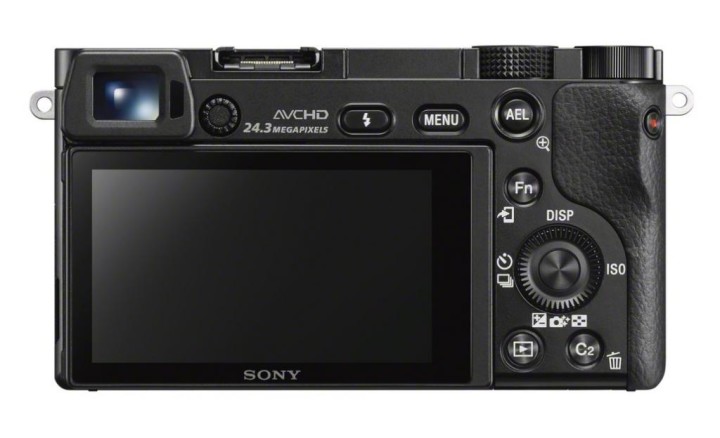We’ve been inundated with a number of exciting mirrorless news updates from Sony, Olympus and Fujifilm over the past few days, so we felt that now was a good time to round them up into one post!
The new Sony A6000
Gone are the days of the beloved Sony Nex line. Say hello instead to the Sony A6000, the spiritual successor to the Nex 6 with an ‘alpha’ denomination like Sony’s DSLRs and its new full frame mirrorless camera line.
We say spiritual successor because, in many ways, the new A6000 is far more similar to the Sony A7 than it is to the Nex 6. In fact, if you slice off the hump that houses the electronic viewfinder on the A7, the body is practically identical in size, and very similar in terms of design.

Among its features are dedicated shutter speed and aperture dials, a pop-up flash, a function button, a video record button, two custom buttons, a tilting LCD, NFC and WiFi (as well as support for the Sony PlayMemories app), and a bright and accurate built-in electronic OLED viewfinder.
It has the same BIONZ X image processing engine as the A7, which promises more realistic reproduction of detail, and video enthusiasts will be glad to know that the camera shoots 1920 x 1080 AVCHD video at 60p/60i/24p/24i frame rates.

Curiously, the EVF on the A6000 is smaller and doesn’t have as much resolution as the previous Nex 6. To what degree the quality differs is yet to be seen.
As if the full-frame high-end A7 and A7r weren’t sufficient proof of Sony’s dedication to image quality, we now have a brand new 24MP ASP-C sensor inside the mid-end A6000. This sensor features 179 face detect and 25 contrast detect autofocus points, making it the fastest autofocus in the world – even faster than a DSLR, according to Sony UK. Not only, but it shoots at a blindingly fast burst rate of 11 frames per second. How long it will keep the ‘fastest autofocus’ title is unsure, but what we do know is that it renders the A6000 a formidable competitor for the likes of the OM-D E-M10 and Lumix GX7.

The expected price should be in the ballpark of a very reasonable $650 for the camera body on its own, and $800 with the 16-50mm power zoom.
With this camera, Sony is certainly aiming at the advanced shooter who is either considering a mid-range mirrorless or DSLR. It goes without saying that the competition gets stronger with every month that passes!
New Olympus M.Zuiko Pro lenses!
Today, Olympus revealed in a press release the development of two new Pro lenses, the 7-14mm f/2.8 and the 300mm f/4. The lenses are in the same category as the 12-40mm f/2.8 that was released with the E-M1 and the 50-150mm f/2.8 which should be released later on this year. The new lenses will be weather-sealed and promise to have the same build and image quality as the 12-40mm.

The 7-14mm will compete directly against the Lumix 7-14mm but with an extra stop of luminosity (the Lumix lens is an f/4). The 300mm is an extreme fixed telephoto lens aimed at wildlife or sports photography.

Personally, we are waiting for the 40-150mm as it could be a great addition to Mat’s kit for events and wedding reportage. The lens will probably be twice as big as the excellent Lumix 35-100mm f/2.8 so we are curious to see if the extra 50mm (100mm equivalent) will make the difference and if the lens will perform as well with regards to AF and image quality.
The 7-14mm is also very interesting as there aren’t many extreme wide-angle lenses available for MFT. The bad news is that both the 7-14 and 300 will not be released until 2015, so there is still one year to wait. Also, the renderings above may not represent the final design or size of the lenses.
A new lens converter for the Fuji X100s
Among the various accessories for the X100/X100s, there is a wide conversion lens, which results in an equivalent focal length of 28mm (the X100s lens is a 35mm equivalent). At the CP+ in Japan, a new tele conversion lens was recently spotted. It will transform the 35mm equivalent focal length into a 50mm.
In all honesty, I’m not overly interested in conversion lenses for the X100s because they go against the ethos of the system in my opinion. However, with these two conversion lenses the X100s will become something of a “fake” interchangeable lens system of its own.
